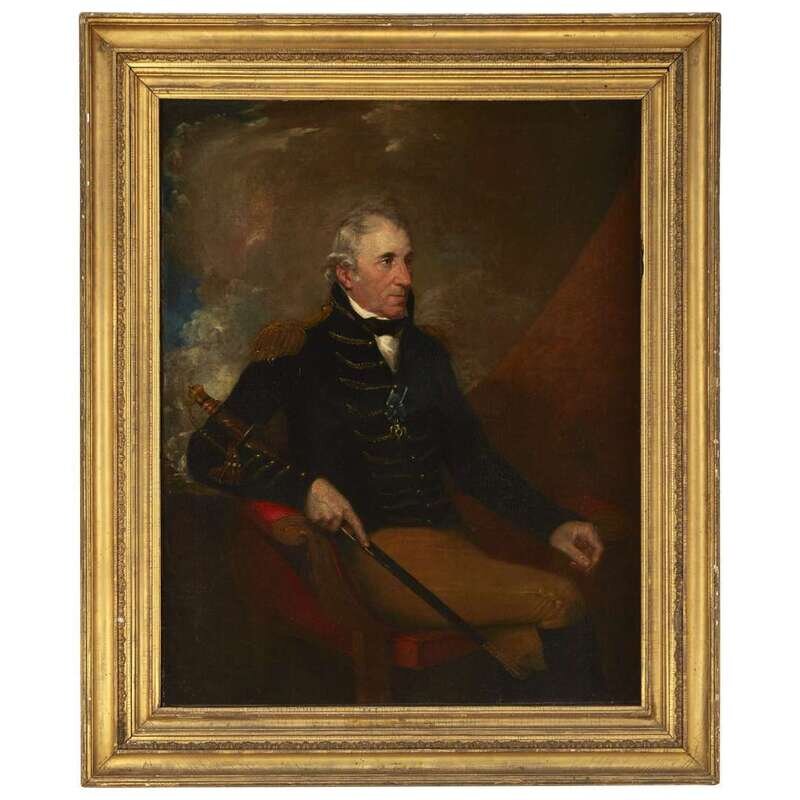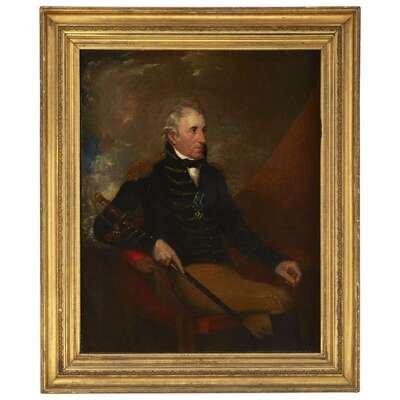Condition Report
Contact Information
Lot 99
Samuel Finley Breese Morse (1791-1828) Portrait of Major General Thomas Pinckney (1750-1828) of Charleston, South Carolina, circa 1820
Sale 5994 - American Furniture, Folk & Decorative Arts
Nov 12, 2019
10:00AM ET
Live / Philadelphia
Own a similar item?
Estimate
$60,000 -
100,000
Price Realized
$187,500
Sold prices are inclusive of Buyer’s Premium
Lot Description
Samuel Finley Breese Morse (1791-1828) Portrait of Major General Thomas Pinckney (1750-1828) of Charleston, South Carolina, circa 1820
Oil on canvas, verso retains two printed exhibition labels from the National Portrait Gallery, Smithsonian Institution, Washington D.C., framed.
43 in. x 38 in. (sight)
Exhibited
"If Elected. Unsuccessful Candidates for the Presidency, 1796-1968,"National portrait Gallery, Smithsonian Institution, Washington D.C., May 3 to September 4, 1972.
"Old Hickory: A Life Sketch of Jackson," National Portrait Gallery, Smithsonian Institution, Washington D.C., November 9., 1990-January 13 1991 and Tennessee State Museum, February 18,1991 - April 29, 1991.
Columbia Museum of Art. Columbia, South Carolina.
Greenville County Museum of Art , Greenville, South Carolina.
Literature
Nina G. Parris, "South Carolina Collection, 1779-1985," (1986) Columbia Museum of Art, 24.
Lillian B. Miller, If Elected. Unsuccessful Candidates for the Presidency, 1796-1968, (1972) 24.
Harry B. Wehle, Samuel F. B. Morse American Painter - A Study Occasioned by an Exhibition of his Paintings , February 16 through March 27, 1932, (1932) ,41.

